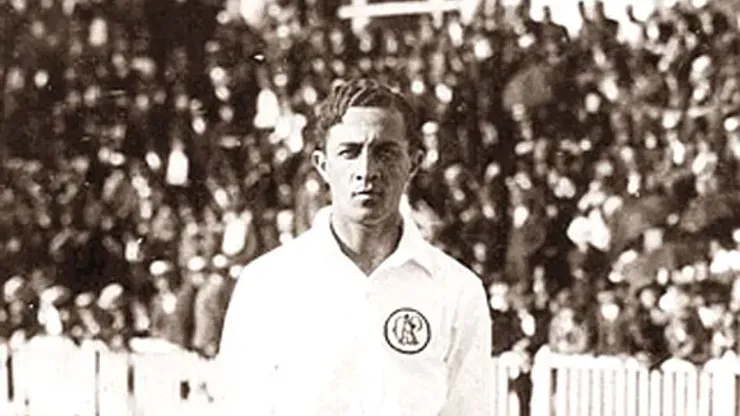The Beautiful Game in Brazil is well known worldwide. It’s fashionable to own a scarf, or jersey, or know their players. There are many podcasts and computer games that help people learn about the players from the past. But what if I told you there was a player before Pele that was better? His name was Arthur Friendenreich. And yes, he was German/Brazilian.
Friendenreich, a son of a German businessman, played soccer in Sao Paolo. Arthur was half white, half black. Oscar, who was Arthur’s father, played soccer at the Brazilian club SC Germania, which as the name infers was only for German immigrants. Arthur joined the club at 17, in 1909, which made him the first black player in history to play for the professional league. Brazilian society was very racist at the time. Blacks weren’t allowed to celebrate with their club if they won a cup, and were not able to hold top jobs. Arthur would go on to play with many of the top clubs at the time — Sao Paulo, Flamengo, Ypiranga, Atletico Mineiro, and Paulistano.
The Tiger, as he was affectionately called by the fans, did something even the great Pele didn’t do. He became the top scorer in Brazil eight times in 1912, 1914, 1917-19, 1921, 1927 and 1929. Arthur was a great dribbler, and would never give up on the field, and had a sharp eye for goal. When he played for Paulistano when they toured Europe, Arthur’s fandom stretched worldwide. By the start of the 1920’s, Arthur was considered the best player in the world.
On the international level, his best achievement was Brazil’s Copa America’s 1919 triumph where he scored the winning goal against Uruguay in the 122nd minute. It was such a good goal that the boot he scored it with was paraded by fans around the streets of Rio de Janeiro. The boot was even nicknamed “The glorious foot of Friedenreich.” It finally was put in a local jeweler’s store for all to see.
He was one of those players who changed society. Very few can say that. Many players changed the game. Where he met racism and prejudice, he changed it. Where black players weren’t allowed on national teams or not allowed to celebrate with their fans or the teammates, he changed it. In 1921, society was outraged when the black players were left out of the national side by the selection committee. That was because the common folk didn’t see the color of their skin. They saw their play. That was something Brazilian blacks needed. He lived the life that he could, drank expensive beer, and partied when he wanted.
200+ Channels With Sports & News
- Starting price: $33/mo. for fubo Latino Package
- Watch Premier League, Women’s World Cup, Euro 2024 & Gold Cup
The New Home of MLS
- Price: $14.99/mo. for MLS Season Pass
- Watch every MLS game including playoffs & Leagues Cup
Many Sports & ESPN Originals
- Price: $10.99/mo. (or get ESPN+, Hulu & Disney+ for $14.99/mo.)
- Features Bundesliga, LaLiga, Championship, & FA Cup
2,000+ soccer games per year
- Price: $5.99/mo
- Features Champions League, Serie A, Europa League & Brasileirāo
175 Premier League Games & PL TV
- Starting price: $5.99/mo. for Peacock Premium
- Watch 175 exclusive EPL games per season






